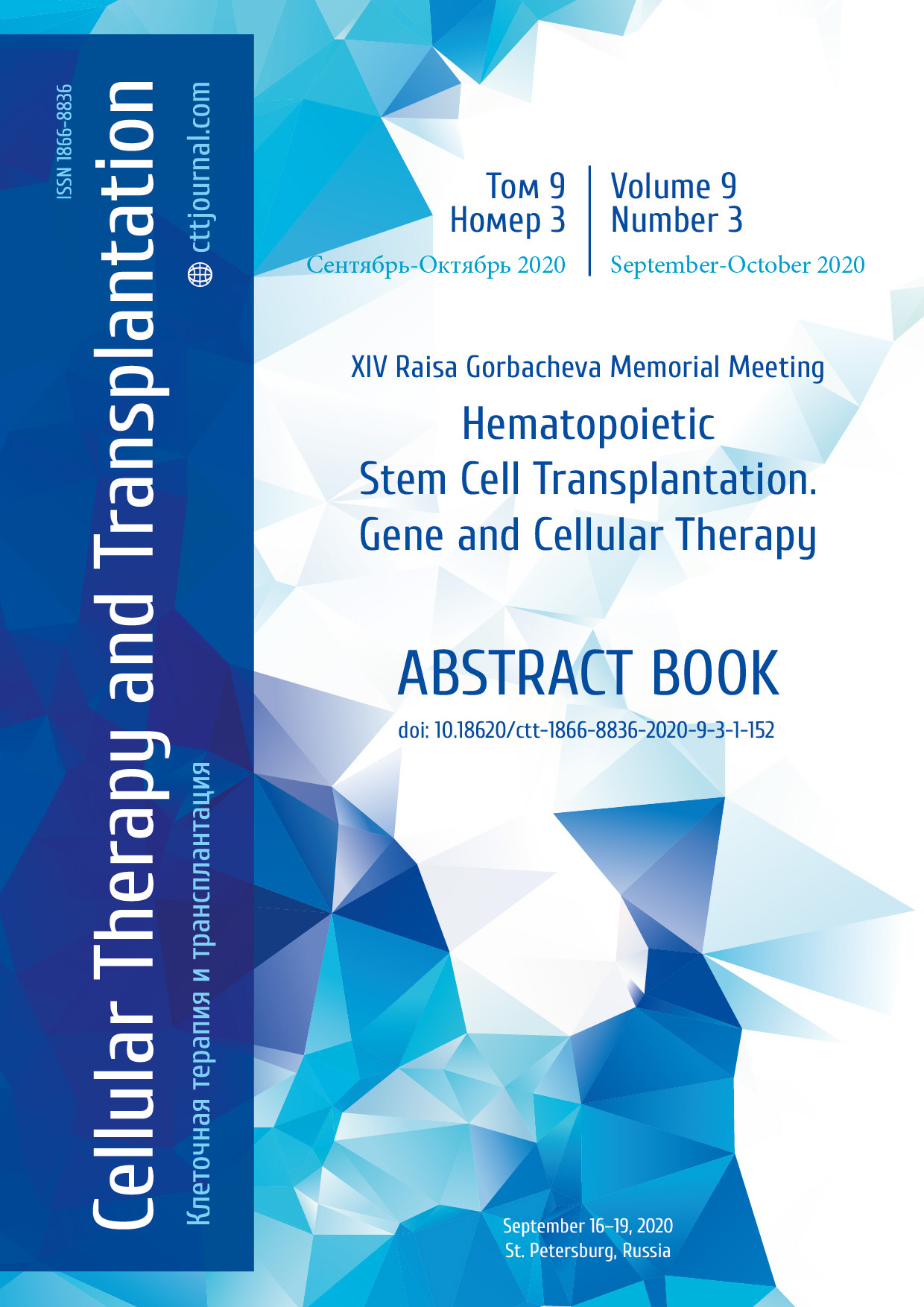IC-10. Extracorporeal photopheresis in the treatment of chronic graft-versus-host disease: experience at the National Center of Hematology
Vera A. Vasilyeva, Larisa A. Kuzmina, Mikhail Yu. Drokov, Mariya V. Dovydenko, Olga M. Koroleva, Darya S. Dubnyak, Anna A. Dmitrova, Natalya M. Nikiforova, Olga S. Starikova, Denis V. Kamelskikh, Alexandra A. Shcherbakova, Tatyana V. Gaponova, Elena N. Parovichnikova, Valery G. Savchenko
National Research Center for Hematology, Moscow, Russia
Contact: Dr. Vera A. Vasilyeva, e-mail: vasilievaVA4@mail.ru
Summary
Introduction
Chronic graft-versus-host disease (GVHD) is a frequent complication after allogeneic hematopoietic stem cell transplantation (allo-HSCT) associated with decreased quality of life. Extracorporeal photopheresis (ECP) is a potential second-line treatment modality for steroid-refractory cGvHD. The aim of the study was to evaluate effectiveness of ECP treatment in patients with corticosteroid-refractory, -dependent or -intolerant chronic GVHD at the National Research Center for Hematology.
Materials and methods
24 patients with corticosteroid-refractory (n=19), -dependent (n=4) or -intolerant (n=1) chronic GVHD were included into the study and received ECP therapy. Nine patients had moderate chronic GVHD, and 15 had a severe chronic GVHD defined as per criteria of National Institutes of Health (NIH) [1]. Skin and mucosal barriers were the most frequent sites involved in 21 and 20 of 24 patients, respectively. Liver and lung injuries were detected in 8 and 6 patients, respectively. The median number of ECP procedures was 22 (range 6-48). The median duration of treatment was 9.5 months (range 1-33 months). To assess the response to therapy, special questionnaires were used by physicians and the patients. The doctors used a questionnaire of cGVHD activity by Lee S. et al., whereas an adapted questionnaire by Lee S. et al. was used by the patients [2]. The questionnaires were filled once per 4 ECP procedures.
Results
Clinical response was determined in 23 patients; one patient was excluded from further assessment due to relapse of acute leukemia. The overall response rate to ECP therapy was 69.5%. Three patients (18.75%) achieved complete response with complete withdrawal of immunosuppressive therapy. The best organ-specific response was observed in patients with the mucosal lesions (n=17, (89.4%); with skin affections (n=17, 85%), and liver involvement (n=7, 75%). In 75% of the patients, ECP therapy resulted in partial tapering or complete withdrawal of immunosuppressive therapy.
Conclusion
ECP is an effective method of therapy of chronic GVHD, especially in patients with involvement of mucous sites, skin and liver. ECP therapy did not seem to be effective in the treatment of chronic GvHD of lungs, however, clinical stabilization could be achieved in 40% of patients.
References:
1. Jagasia M.H., Greinix H.T., Arora M., et al. National Institutes of Health Consensus Development Project on Criteria for Clinical Trials in Chronic Graft-versus-Host Disease: I. The 2014 Diagnosis and Staging Working Group Report. Biol Blood Marrow Transplant. 2015;21(3):389-401.e1.
2. Lee S.J., Wolff D., Kitko C., et al. Measuring Therapeutic Response in Chronic Graft-versus-Host Disease. National Institutes of Health Consensus Development Project on Criteria for Clinical Trials in Chronic Graft-versus-Host Disease: IV. The 2014 Response Criteria Working Group Report. Biol Blood Marrow Transplant. 2015;21(6):984-99.
Keywords
Chronic graft-versus-host disease, extracorporeal photopheresis, second-line therapy.


